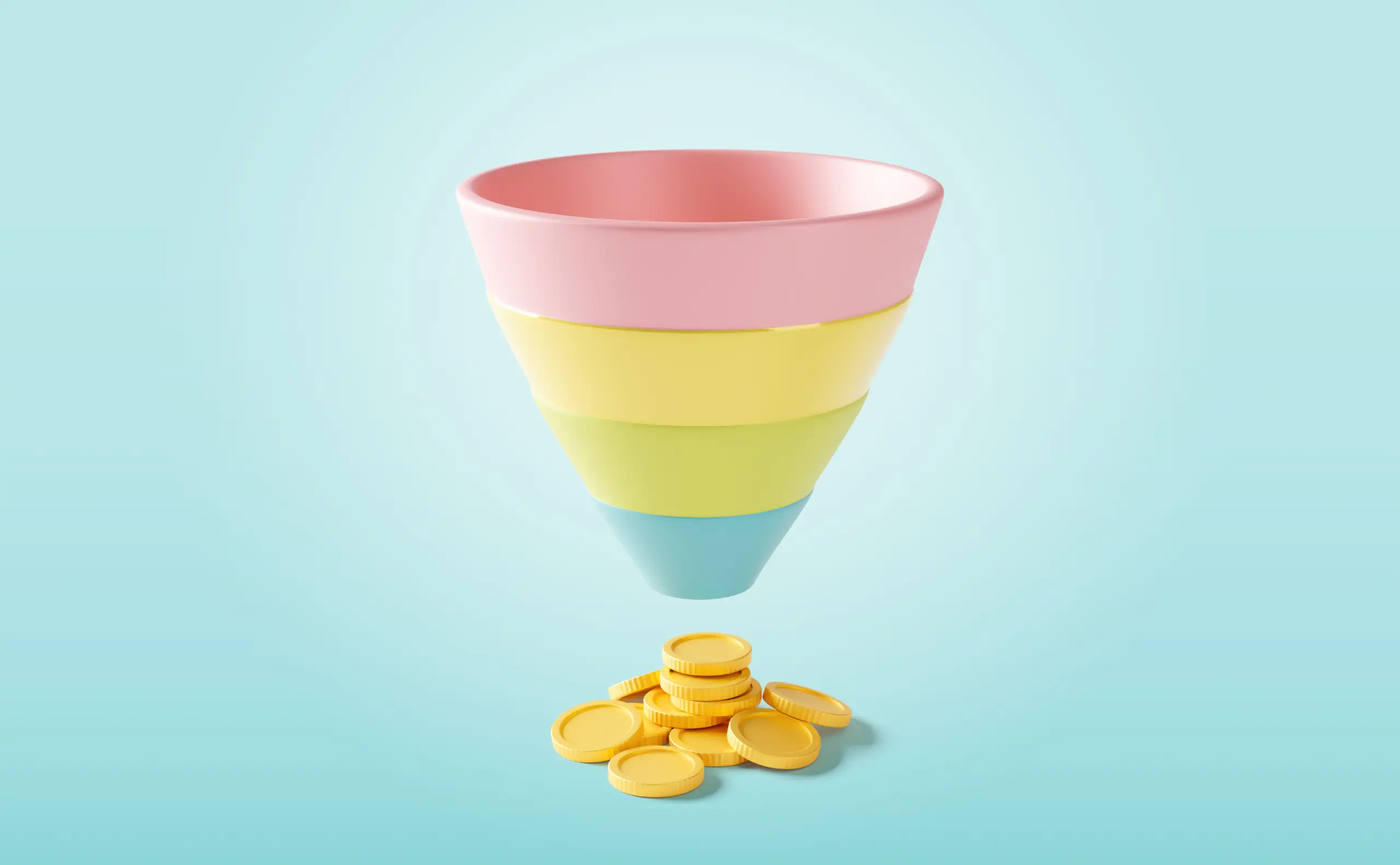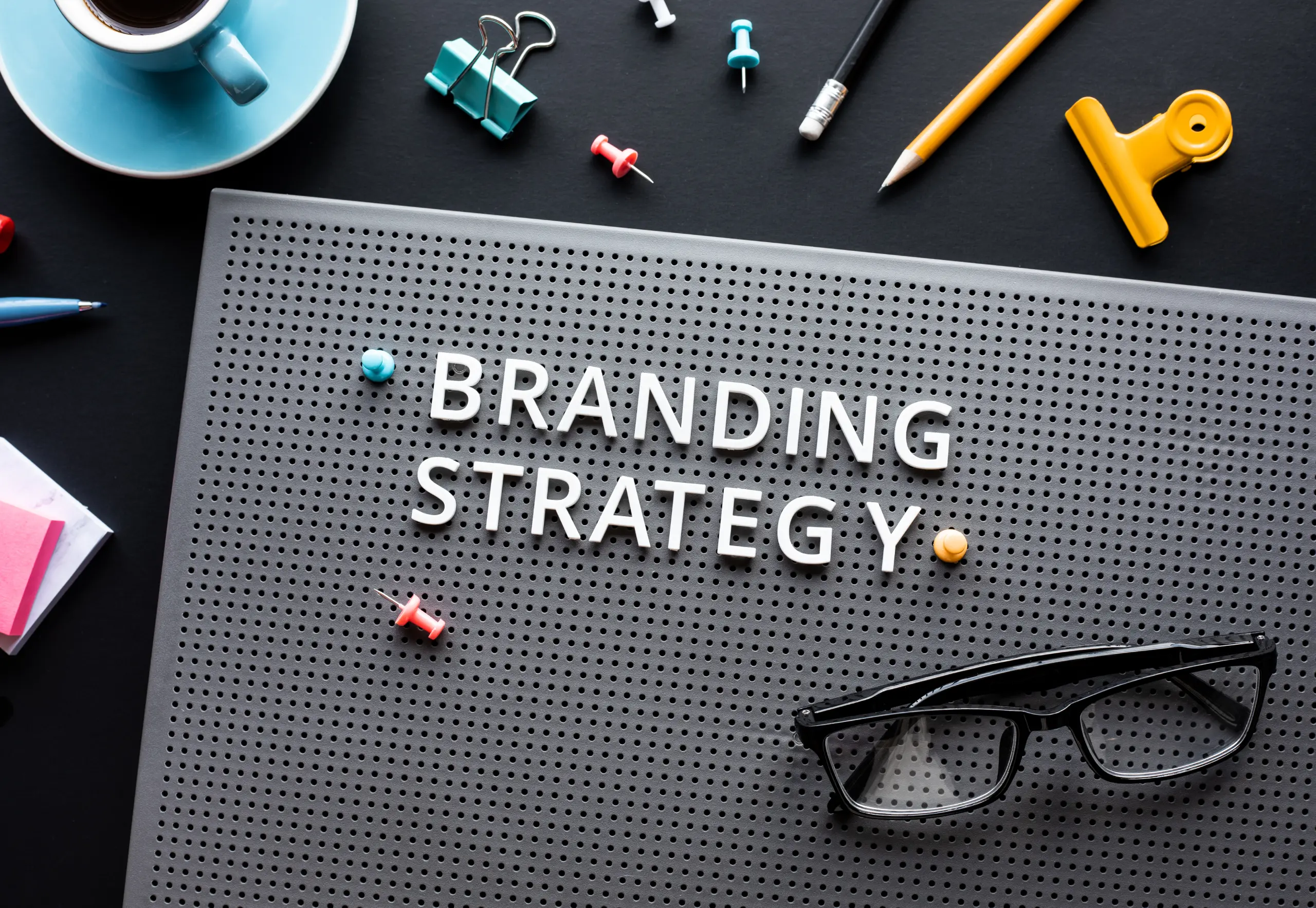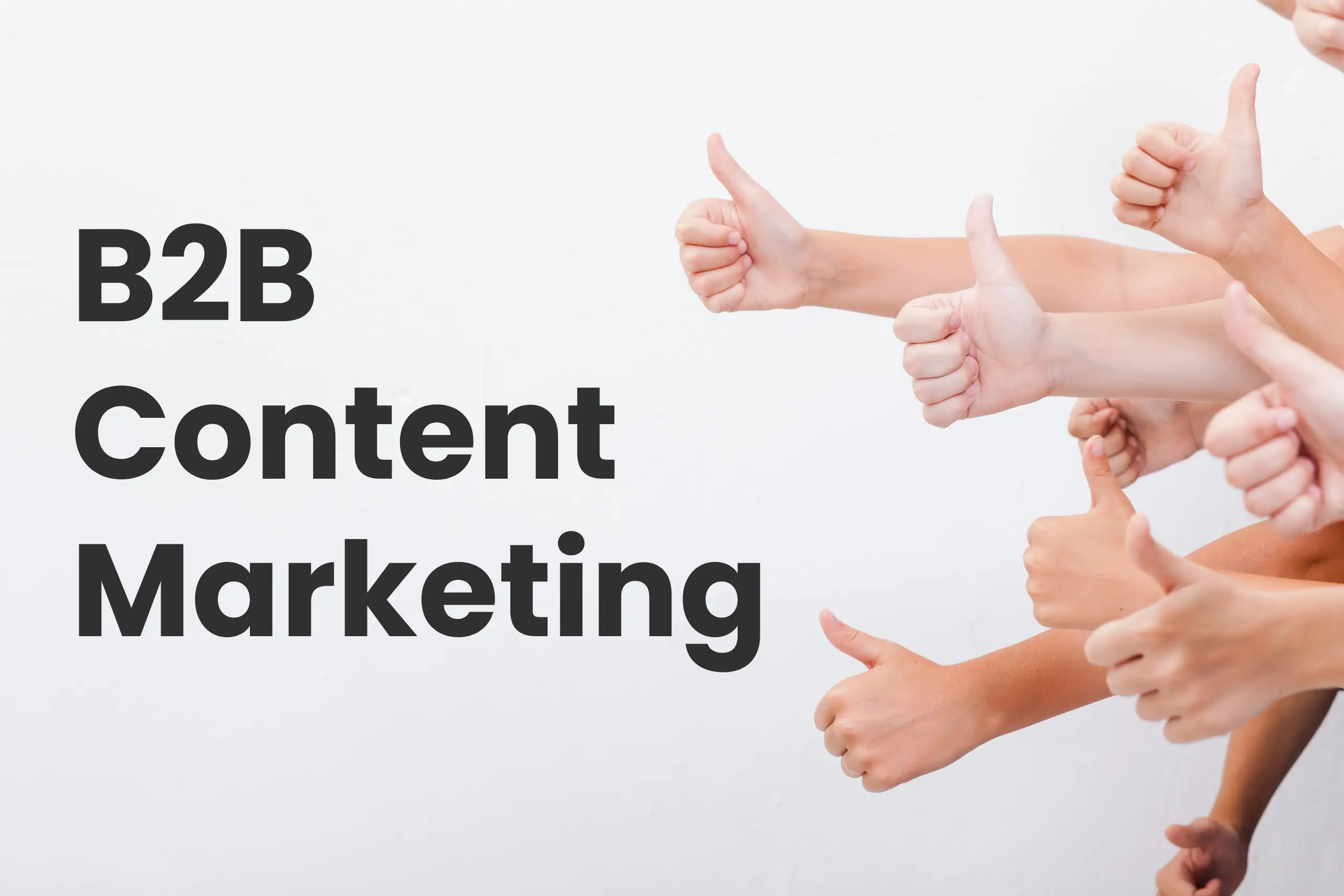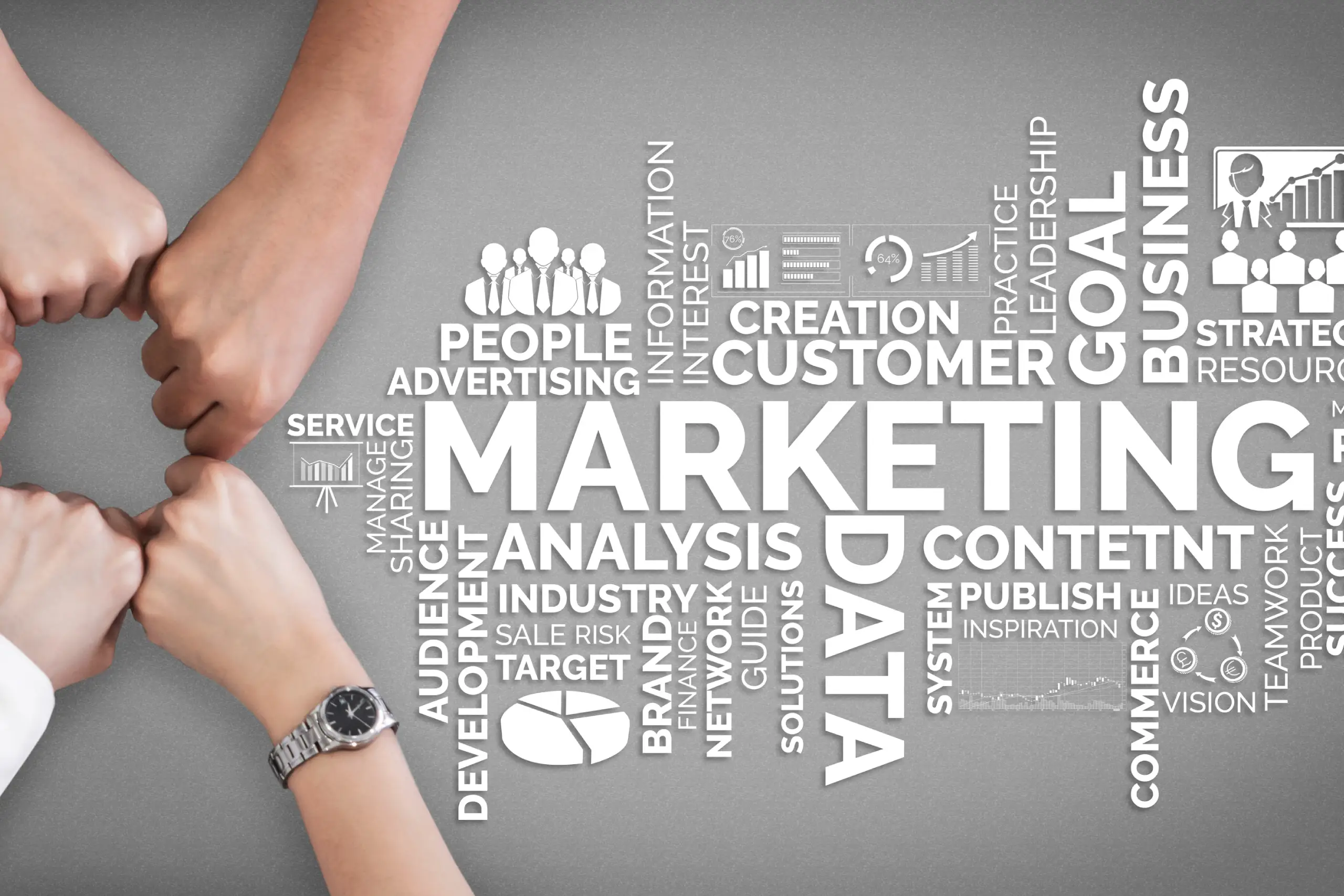Table of Contents
ToggleThe B2B marketing funnel is a framework that businesses use to guide potential customers from awareness to purchase. It’s a visual representation of the customer journey, from the first time a potential customer hears about your company to the moment they make a purchase and become a customer.
In the dynamic landscape of B2B marketing, understanding the intricacies of the marketing funnel is paramount. The B2B marketing funnel serves as a roadmap, guiding potential customers from their initial interaction with your brand to becoming loyal advocates. This journey is divided into distinct stages, each demanding tailored strategies to effectively nurture leads and drive conversions.
In this blog post I will dissect the B2B marketing funnel, shedding light on strategies that can propel your business towards success. From the crucial stages of awareness to the post-purchase phase, we’ll explore proven tactics, technologies, and case studies to help you master this fundamental aspect of marketing together.
3 Stages of B2B Marketing Funnel
The B2B marketing funnel is typically divided into three stages:
Top-of-funnel (TOFU): This stage is all about creating awareness and generating leads. You want to make sure that potential customers know about your company and what you have to offer. You can do this through content marketing, search engine optimization (SEO), and social media marketing.
Middle-of-funnel (MOFU): This stage is about nurturing leads and building relationships. You want to provide potential customers with valuable content and resources that will help them learn more about your products or services and how they can solve their problems. You can do this through email marketing, webinars, and case studies.
Bottom-of-funnel (BOFU): This stage is about converting leads into customers. You want to provide potential customers with a clear call to action and make it easy for them to buy from you. You can do this through landing pages, free trials, and demos.

Awareness (TOFU)
Understanding the Awareness Stage in B2B Marketing
At the top of the funnel lies the awareness stage, where prospects first encounter your brand. This is your chance to make a memorable impression, but it requires a deep understanding of your target audience and their pain points.
Target Audience Identification and Persona Development
One of the cornerstones of successful B2B marketing is knowing exactly who you’re marketing to. Detailed buyer personas allow you to tailor content, messaging, and outreach efforts to resonate with your ideal customers.
Top-of-Funnel Content Strategies
To capture attention and ignite interest, your content at this stage should be educational, informative, and engaging. Consider deploying strategies such as in-depth blog posts, visually appealing infographics, and active social media engagement.
- Educational Blog Posts: Dive deep into topics that address your audience’s pain points and provide valuable insights.
- Infographics and Visual Content: Condense complex information into visually appealing formats for easy consumption.
- Social Media Engagement: Leverage platforms where your target audience congregates. Engage in discussions, share valuable content, and build relationships.
Measuring Awareness: Key Metrics and Tools
Metrics such as website traffic, social media reach, and engagement rates are critical indicators of how effectively you’re raising awareness. Utilize tools like Google Analytics, social media insights, and CRM systems to gain valuable insights into your audience’s behavior.
Consideration (MOFU)
Defining the Consideration Stage and its Purpose
As prospects progress into the consideration stage, they’ve shown interest and are seeking more in-depth information about your offerings. This is the moment to demonstrate how your solutions address their specific needs.
Tailoring Content for Consideration
At this stage, content should be more detailed and solution-oriented. Provide resources like case studies, webinars, and comparison guides to help prospects evaluate your offerings.
- Case Studies and Whitepapers: Showcase real-world examples of how your products or services have successfully addressed similar challenges.
- Webinars and Video Content: Engage your audience with interactive, multimedia content that offers in-depth insights and showcases your expertise.
- Comparison Guides and Product Demonstrations: Help prospects understand the unique value proposition of your offerings compared to alternatives.
Implementing Lead Nurturing Strategies
The consideration stage is a critical juncture for lead nurturing. Leverage email marketing campaigns, retargeting ads, and remarketing content to keep prospects engaged and guide them towards a conversion.
- Email Marketing Campaigns: Craft personalized, informative emails that provide value and encourage further interaction.
- Retargeting Ads: Re-engage with prospects who have shown interest by displaying relevant ads across various platforms.
- Remarketing Content: Provide additional resources and tailored messaging to address any remaining doubts or concerns.
Measuring Consideration: Metrics and Analytics
Key performance indicators (KPIs) at this stage may include click-through rates, engagement levels with content, and lead quality scores. Employ analytics tools to track and evaluate the effectiveness of your consideration-stage efforts.
Decision (BOFU)
Unpacking the Decision Stage in B2B Marketing
The decision stage marks the pivotal moment when prospects are poised to make a purchasing decision. Here, your efforts must instill confidence and provide the final push towards conversion.
Content Strategies to Support Decision-Making
To facilitate the decision-making process, offer content that highlights the unique benefits and value proposition of your offerings.
- Customer Testimonials and Reviews: Showcase authentic feedback from satisfied customers to build trust and credibility.
- Free Trials or Demos: Provide hands-on experiences to allow prospects to see the value of your products or services firsthand.
- Product Sheets and Data Sheets: Offer detailed, fact-based resources that address technical specifications and features.
Leveraging Marketing Automation for Lead Scoring
Implement marketing automation to score leads based on their behavior and interactions. This enables you to prioritize and focus efforts on prospects most likely to convert.
Measuring Decision: Conversion Metrics and Attribution Models
Track conversion rates, cost per acquisition (CPA), and return on investment (ROI) to evaluate the effectiveness of your decision-stage strategies. Utilize attribution models to understand the touchpoints that contributed to the conversion.
Building a Successful B2B Marketing Funnel
- Define your goals and objectives: What do you want to achieve with your marketing funnel? Do you want to generate leads, increase sales, or build brand awareness? Once you know your goals, you can tailor your funnel accordingly.
- Understand your target audience: Who are you trying to reach with your marketing funnel? What are their needs and pain points? Once you understand your target audience, you can create content and offers that are relevant and appealing to them.
- Choose the right marketing channels: Not all marketing channels are created equal. Some channels are better suited for certain stages of the funnel than others. For example, content marketing and social media marketing are great for TOFU activities, while email marketing and webinars are great for MOFU activities.
- Create high-quality content: Your content is the foundation of your marketing funnel. It should be informative, engaging, and relevant to your target audience.
- Track your results: It’s important to track your results so you can see what’s working and what’s not. This will help you optimize your funnel and improve your results over time.
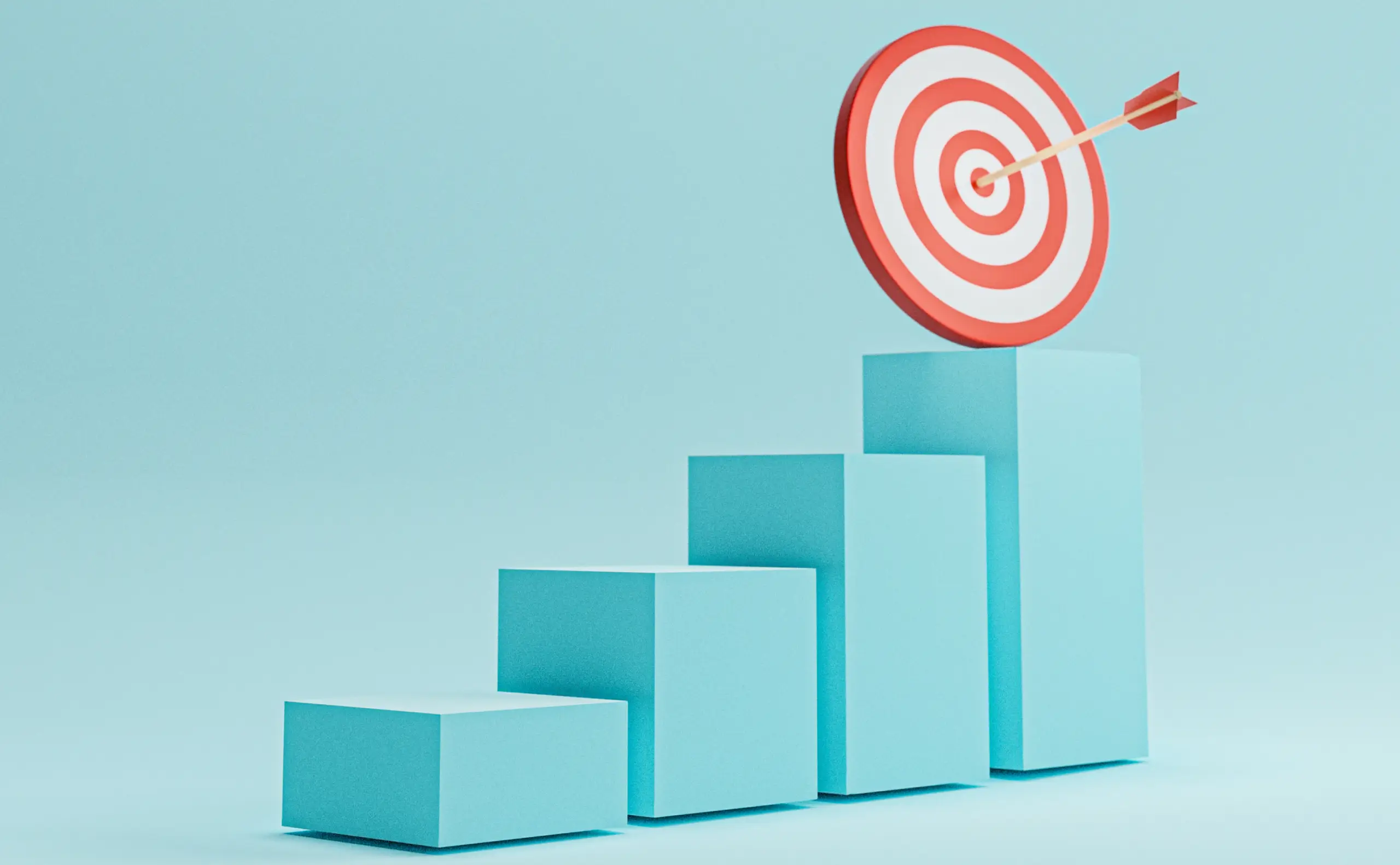
Post-Purchase
Normally we have just three stages for B2B Marketing Funnel but the journey doesn’t end with a successful conversion. The post-purchase phase is about cultivating long-term relationships, driving loyalty, and turning customers into advocates.
Building Customer Loyalty and Satisfaction
Ensure that your customers have a positive onboarding experience and provide ongoing support to address their needs.
- Onboarding Programs and Support Resources: Guide customers through the initial setup and usage of your products or services.
- Customer Surveys and Feedback Loops: Gather feedback to identify areas for improvement and demonstrate your commitment to customer satisfaction.
- Exclusive Offers and Upsell Opportunities: Reward loyal customers with special offers and introduce complementary products or services.
Encouraging Customer Advocacy and Referrals
Empower satisfied customers to become ambassadors for your brand.
- Referral Programs: Incentivize customers to refer new business through rewards or exclusive benefits.
- User-Generated Content: Encourage customers to share their experiences and testimonials, amplifying your brand’s credibility.
Measuring Post-Purchase Success: Customer Retention and Referral Metrics
Monitor customer retention rates, Net Promoter Score (NPS), and referral conversions to gauge the effectiveness of your post-purchase strategies.
Integrating Technology and Tools for Effective Funnel Management
In today’s rapidly evolving business landscape, the integration of technology and specialized tools has become paramount for successful B2B marketing funnel management. As businesses strive to reach and engage their target audience more effectively, harnessing the power of these digital solutions has become a strategic imperative. Let’s explore how the right technology can optimize each stage of the B2B marketing funnel.
CRM Systems and Marketing Automation Platforms
Central to effective funnel management is a robust Customer Relationship Management (CRM) system. This technology serves as the nerve center, housing vital customer data, interactions, and segmentation. It empowers businesses to create tailored, personalized experiences for leads and prospects.
Furthermore, marketing automation platforms seamlessly sync with CRMs, enabling businesses to automate and streamline marketing workflows. From lead nurturing to dynamic content delivery, automation ensures that the right message reaches the right person at the right time. This dynamic duo of CRM and automation simplifies lead scoring, allowing businesses to prioritize high-value leads for targeted outreach.
Analytics and Reporting Tools
Data is the lifeblood of any effective marketing strategy. Analytics and reporting tools provide deep insights into customer behavior, content performance, and conversion metrics. These platforms offer a wealth of information, from website traffic patterns to email engagement rates. Armed with this data, businesses can make informed decisions, refine content strategies, and identify areas for improvement.
Through conversion tracking, attribution modeling, and customer journey analysis, businesses gain a comprehensive understanding of how leads progress through the funnel. This knowledge is invaluable for optimizing touchpoints, refining messaging, and maximizing conversion rates.
A/B Testing and Optimization Software
A/B testing and optimization software empowers businesses to fine-tune their messaging and content. By testing different variations of emails, landing pages, and CTAs, marketers can identify what resonates most with their audience. This iterative process of experimentation and refinement leads to higher engagement and conversion rates.
Optimization tools go hand-in-hand with A/B testing, allowing businesses to enhance user experience and website performance. This includes everything from mobile responsiveness to page load times. Ensuring a seamless, user-friendly experience at every touchpoint is crucial for guiding leads through the funnel.
Customer Relationship Management Best Practices
While technology provides the infrastructure, it’s essential to remember that successful funnel management is a human-centric endeavor. Implementing best practices in customer relationship management fosters trust and loyalty. Timely responses, personalized communication, and a genuine commitment to customer success are essential elements of a strong CRM strategy.
Moreover, actively seeking and acting on customer feedback is a powerful way to refine products and services. This customer-centric approach not only strengthens relationships but also positions businesses as partners in their customers’ success.
In conclusion, integrating technology and tools for effective funnel management is the linchpin of modern B2B marketing success. The seamless coordination of CRM systems, marketing automation, analytics platforms, A/B testing tools, and optimization software empowers businesses to engage leads with precision and convert them into loyal customers. By marrying technology with customer-centric practices, businesses can navigate the complexities of the B2B marketing funnel with confidence and efficiency.
Case Studies: Successful B2B Marketing Funnel Implementations
Case Studies: Successful B2B Marketing Funnel Implementations
Case studies serve as powerful tools in the realm of B2B marketing. They provide tangible evidence of a business’s ability to deliver value and solve specific pain points for clients. When strategically integrated into the marketing funnel, case studies become dynamic assets that guide prospects through their decision-making journey.
Why Case Studies Matter
-
Demonstrating Real-World Success: Case studies offer a concrete showcase of how a business has successfully addressed the challenges faced by a client. This tangible evidence helps build trust and credibility.
-
Highlighting Expertise and Specialization: They showcase the business’s expertise, industry knowledge, and specific strengths in solving complex problems within a particular sector.
-
Tailored Solutions: Case studies can be customized to resonate with different segments of your target audience. For instance, if you serve multiple industries, you can create case studies specific to each.
Structuring an Effective Case Study
-
Problem Statement: Clearly articulate the client’s initial challenge or pain point. This sets the stage for the solution your business provided.
-
Solution Offered: Describe the specific product or service your business provided to address the client’s problem. Highlight the unique aspects that differentiated your solution.
-
Implementation and Process: Detail how the solution was implemented, showcasing your team’s expertise and strategic approach.
-
Measurable Results: Quantify the impact of your solution. This could be in terms of cost savings, revenue increase, efficiency gains, or any other relevant metrics.
-
Client Testimonial or Quote: Include a statement from the client expressing their satisfaction and the benefits they gained from working with your business.
Integrating Case Studies into the Funnel
-
Awareness Stage:
- Use concise, attention-grabbing snippets from case studies in social media posts, infographics, or introductory emails to introduce prospects to real success stories.
-
Consideration Stage:
- Provide full-length case studies in this stage. Offer them as downloadable resources in exchange for contact information, allowing you to nurture leads further.
-
Decision Stage:
- Showcase case studies that align closely with the specific pain points or challenges prospects are facing. This helps instill confidence in your ability to deliver.
-
Post-Purchase Stage:
- Continue to leverage case studies to solidify client relationships. Share new case studies that demonstrate ongoing value and innovation.
Customizing Case Studies for Various Industries or Use Cases
Tailoring case studies to specific industries or use cases enhances their relevance to different segments of your audience. This customization shows prospects that you understand their unique challenges and have a track record of solving them effectively.
Incorporating successful case studies into your B2B marketing funnel adds a layer of credibility and authenticity to your messaging. They provide tangible proof that your business not only understands the needs of your clients but also has a proven track record of delivering results. When strategically deployed at each stage of the funnel, case studies become invaluable assets that guide prospects towards conversion.
Conclusion (Absolutely)
In this comprehensive guide, we’ve delved into the intricacies of the B2B marketing funnel, exploring each stage and offering strategies for success. By understanding the nuances of the awareness, consideration, decision, and post-purchase phases, businesses can optimize their marketing efforts and drive meaningful conversions.
Remember, a successful B2B marketing funnel is a dynamic process that requires continuous refinement and adaptation. Stay abreast of emerging technologies and trends to keep your funnel strategies at the forefront of industry standards.
As you embark on your B2B marketing journey, keep in mind that there is no one-size-fits-all approach. Tailor your strategies to your specific industry, target audience, and business objectives. With dedication, insight, and the right tools, you’ll be well-equipped to navigate the B2B marketing funnel and drive sustainable growth for your business.
A B2B marketing funnel is a visual representation of the stages a potential business customer goes through before making a purchase. It outlines the journey from initial awareness of a product or service to the final decision to buy.
The key stages of a B2B marketing funnel are:
- Awareness: When potential customers first learn about your business and what it offers.
- Consideration: Prospects evaluate your offerings and compare them to alternatives.
- Decision: Prospects are on the verge of making a purchase and are evaluating specific solutions.
- Post-Purchase: After a sale, maintaining the relationship and encouraging repeat business or referrals.
B2B and B2C funnels share similar concepts but differ in the complexity of decision-making and sales cycles. B2B funnels typically involve multiple stakeholders, longer sales cycles, and a greater emphasis on building relationships and providing in-depth information.
Content is crucial at every stage of the B2B marketing funnel. It educates, informs, and engages potential customers. In the awareness stage, content establishes your brand’s authority. In the consideration stage, it provides in-depth information. In the decision stage, it helps address specific concerns. Post-purchase, content maintains customer loyalty.
Technology, such as CRM systems, marketing automation, analytics tools, and A/B testing software, streamlines processes, provides valuable data insights, and enables personalized communication with leads and customers. It helps businesses manage and optimize their marketing efforts more effectively.
- Understand your target audience and create detailed buyer personas.
- Tailor content to address specific pain points and needs at each stage.
- Implement marketing automation for lead nurturing and segmentation.
- Continuously analyze data to refine strategies and improve conversion rates.
- Focus on building strong customer relationships post-purchase.
Case studies are powerful tools to showcase real-world success. They can be used at various stages of the funnel:
- In the awareness stage, snippets can be used to introduce prospects to success stories.
- In the consideration stage, full-length case studies can be offered as downloadable resources.
- In the decision stage, case studies relevant to specific pain points instill confidence.
- In the post-purchase stage, new case studies demonstrate ongoing value and innovation.
Common challenges include aligning sales and marketing efforts, effectively nurturing leads, accurately attributing conversions, adapting to changing customer behaviors, and optimizing content for different stages of the funnel.
Key performance indicators (KPIs) include metrics like conversion rates, lead quality, customer acquisition cost, customer lifetime value, and ROI. Analytics tools and CRM systems provide valuable data for tracking and evaluating the funnel’s effectiveness.
Emerging trends include increased use of AI and machine learning for personalization, the rise of account-based marketing (ABM), a stronger focus on customer experience, and the integration of video and interactive content throughout the funnel.
